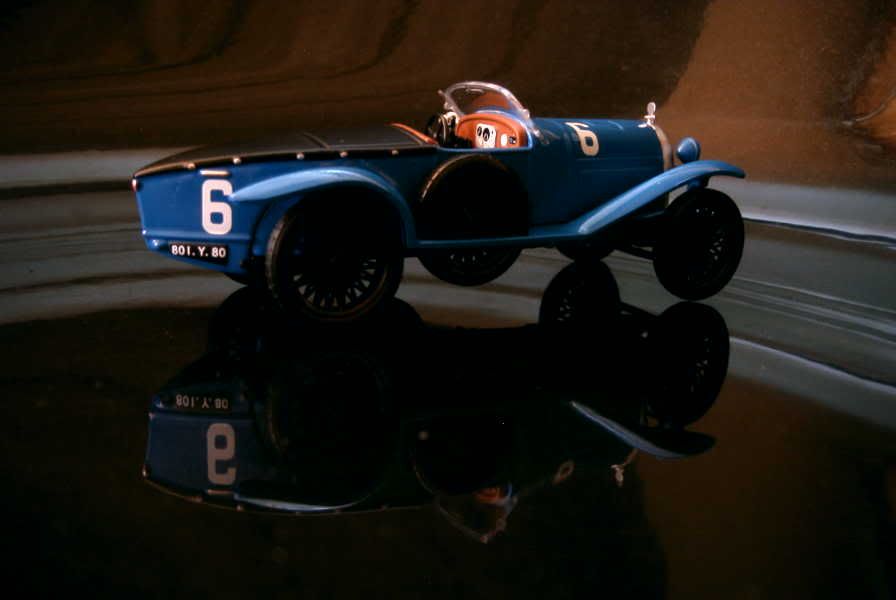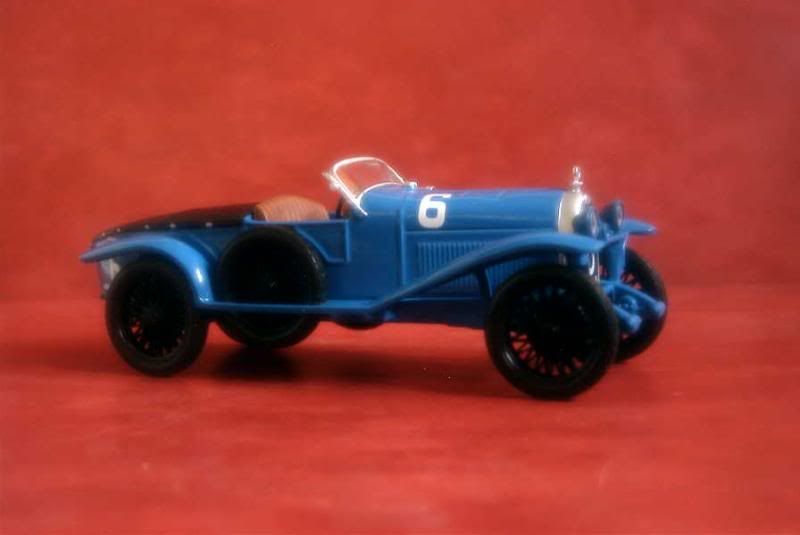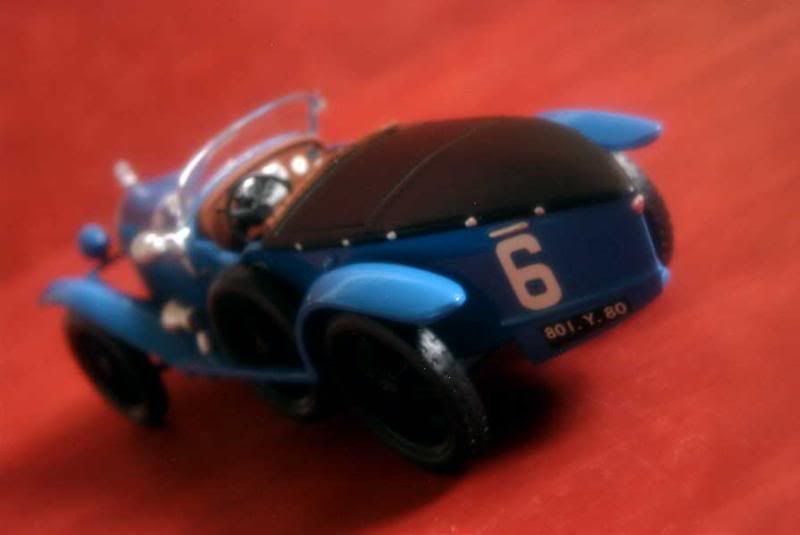A little history
We recently saw how deep Peugeot’s roots extend. Those of de Dietrich go even further back in time, as its industrial activities started as early as… 1684!
De Dietrich was one of the most active companies in motor sports at the glorious times of the city-to-city races, with de Turckheim himself often seen behind the wheel. This provided good publicity for the company and boosted its sales, a welcomed thing as its cars were rather expensive. Actually, de Dietrich, which started fitting a large Lorraine cross onto its cars’ radiators in 1905 and soon afterwards changed its name to Lorraine-Dietrich, tried to position itself among the elite of automobile manufacturers – in this respect, its takeover of Isotta-Fraschini in 1907, though brief, remains significant.
After World War Two, Alsace and Lorraine were returned to France. Technical leadership at Lorraine-Dietrich was taken over by Marius Barbarou, which had already made himself quite a reputation while working as an engineer at Delaunay-Belleville. Soon Barbarou designed a new range of cars, including a 1922 B3-6 model powered by an advanced 3.5-litre hemi six, fitted with aluminium pistons and overhead valves. So, forty years before Mopar, Delaunay-Belleville had its own brilliant hemi engine.
Such a nicely-powered vehicle as the B3-6 couldn’t miss the very first Le Mans 24 hours, organised in 1923. Three cars were entered, one of them finishing a promising 8th. This was enough to justify the creation of a dedicated racing version of the B3-6, the 15 Sport. In 1924, three cars were again entered at Le Mans, finishing this time as high as 2-3 behind the winning Bentley. Success would finally come in 1925 (1-3), immediately followed by triumph (1-2-3 in 1926). Having nothing more to prove, Lorraine-Dietrich retired from Le Mans, though a few privately-entered B3-6s returned to the Sarthe a few years later, one of them finishing a good 4th in 1931 (helped by high attrition rate, to be frank), and the very last one racing there as late as 1935, no less than thirteen years after the introduction of the model! By this time, Lorraine-Dietrich itself was gone as an automobile manufacturer: as tens of other companies in the luxury field, it was hit hard by the aftermath of the world crisis and gave up automobile production in 1934. With a war looming, building aircraft engines and armoured vehicles seemed a more profitable business. Interestingly, the company is still active today: after reverting to the railway equipment business and changing back its name to de Dietrich, it has now entered its fourth century in the industry!
About the model
Model: Lorraine-Dietrich B3-6 (15 Sport)
Year: 1926
Event: 1926 Le Mans 24 Hours, driven by Robert Bloch and André Rossignol (overall winner)
Maker: Ixo
Scale: 1/43
Distributed by: Altaya as no.70 of its Les Plus Belles Voitures des 24 Heures du Mans press series
Acquired: brand new, in August 2006, in Souillac, France
Ixo proposes a nice reproduction of the 1926 Le Mans winner – though not the only one on the market, it is affordable, unlike its competitors. The Altaya version didn’t suffer too much from the necessary cuts in production costs, even its wire wheels remaining quite acceptable. I’d give a 13/20 rating to this model.




We recently saw how deep Peugeot’s roots extend. Those of de Dietrich go even further back in time, as its industrial activities started as early as… 1684!
By the late 19th century, de Dietrich operated two plants in Alsace and Lorraine, the two regions annexed by Germany from France after the 1870-71 war. It was then known as a locomotive manufacturer, but gave a try at automobile construction under the guidance of one of its directors, the young and enthusiastic Adrien de Turckheim. Though known characters worked for de Dietrich, as Amédée Bollée who designed the company’s first vehicle, or a young Italian named Ettore Bugatti, its models were usually far from conventional, always being extremely modern, even ahead of their time from a technical point of view. Among the features introduced on the company’s cars, we find a windshield on their very first car (1896), front independent suspension (1899), a six-wheel limousine (1905 – okay, so this one didn’t caught on, except in the Thunderbirds TV series), V12 engines (1919) and power-assisted brakes on all four wheels (1924).
De Dietrich was one of the most active companies in motor sports at the glorious times of the city-to-city races, with de Turckheim himself often seen behind the wheel. This provided good publicity for the company and boosted its sales, a welcomed thing as its cars were rather expensive. Actually, de Dietrich, which started fitting a large Lorraine cross onto its cars’ radiators in 1905 and soon afterwards changed its name to Lorraine-Dietrich, tried to position itself among the elite of automobile manufacturers – in this respect, its takeover of Isotta-Fraschini in 1907, though brief, remains significant.
After World War Two, Alsace and Lorraine were returned to France. Technical leadership at Lorraine-Dietrich was taken over by Marius Barbarou, which had already made himself quite a reputation while working as an engineer at Delaunay-Belleville. Soon Barbarou designed a new range of cars, including a 1922 B3-6 model powered by an advanced 3.5-litre hemi six, fitted with aluminium pistons and overhead valves. So, forty years before Mopar, Delaunay-Belleville had its own brilliant hemi engine.
Such a nicely-powered vehicle as the B3-6 couldn’t miss the very first Le Mans 24 hours, organised in 1923. Three cars were entered, one of them finishing a promising 8th. This was enough to justify the creation of a dedicated racing version of the B3-6, the 15 Sport. In 1924, three cars were again entered at Le Mans, finishing this time as high as 2-3 behind the winning Bentley. Success would finally come in 1925 (1-3), immediately followed by triumph (1-2-3 in 1926). Having nothing more to prove, Lorraine-Dietrich retired from Le Mans, though a few privately-entered B3-6s returned to the Sarthe a few years later, one of them finishing a good 4th in 1931 (helped by high attrition rate, to be frank), and the very last one racing there as late as 1935, no less than thirteen years after the introduction of the model! By this time, Lorraine-Dietrich itself was gone as an automobile manufacturer: as tens of other companies in the luxury field, it was hit hard by the aftermath of the world crisis and gave up automobile production in 1934. With a war looming, building aircraft engines and armoured vehicles seemed a more profitable business. Interestingly, the company is still active today: after reverting to the railway equipment business and changing back its name to de Dietrich, it has now entered its fourth century in the industry!
About the model
Model: Lorraine-Dietrich B3-6 (15 Sport)
Year: 1926
Event: 1926 Le Mans 24 Hours, driven by Robert Bloch and André Rossignol (overall winner)
Maker: Ixo
Scale: 1/43
Distributed by: Altaya as no.70 of its Les Plus Belles Voitures des 24 Heures du Mans press series
Acquired: brand new, in August 2006, in Souillac, France
Ixo proposes a nice reproduction of the 1926 Le Mans winner – though not the only one on the market, it is affordable, unlike its competitors. The Altaya version didn’t suffer too much from the necessary cuts in production costs, even its wire wheels remaining quite acceptable. I’d give a 13/20 rating to this model.







3 comments:
I´ve got it but my Lorraine isn´t an Altaya model: only Ixo.
Why "only"? If an Ixo, it's even better! ;)
Yesssss!!!
Post a Comment